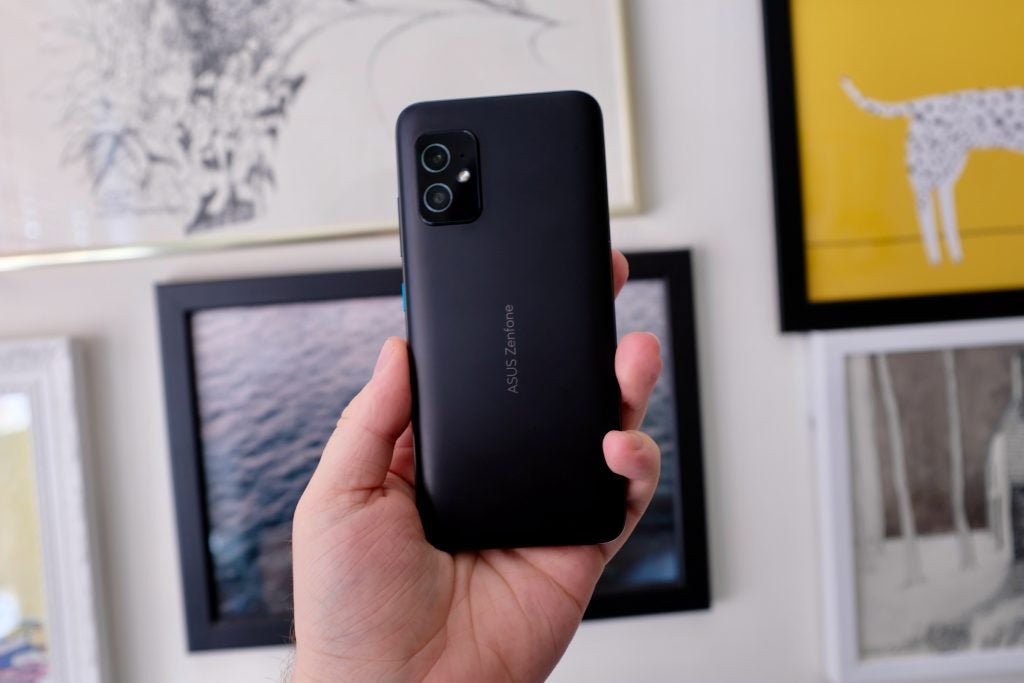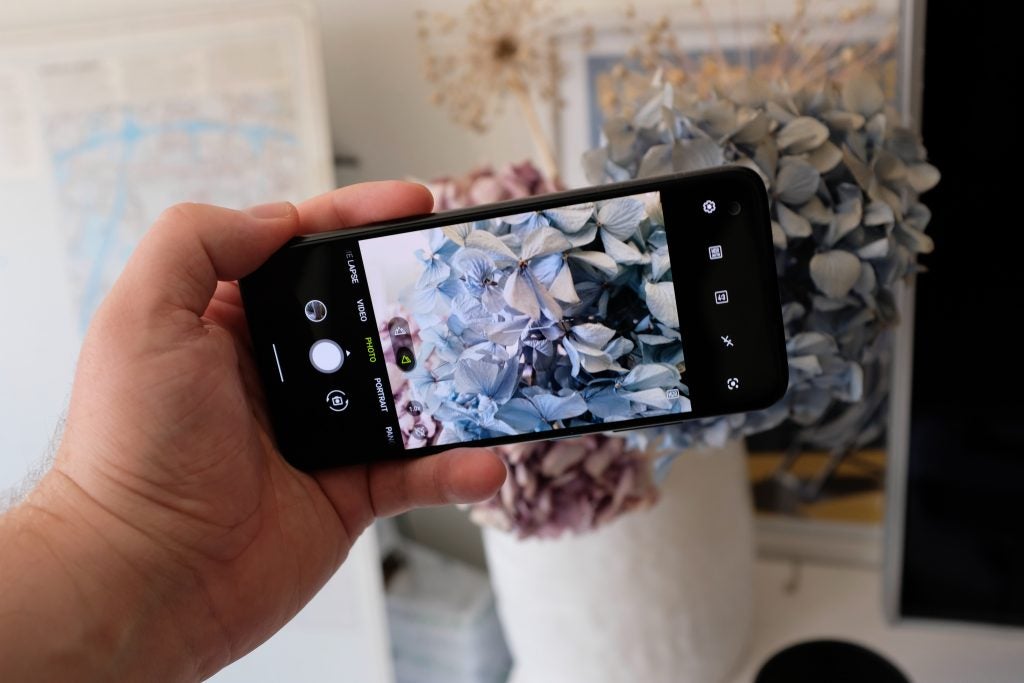The Asus Zenfone 8 is the mini Android phone we need


The Asus Zenfone 8 could have ended up being just another Android phone in the same ilk as the Samsung Galaxy S21 Plus, OnePlus 9 and so on.
Instead, Asus has made a clever decision to try to help this stand out among the other best Android phones around. Unlike those phones I just mentioned, the Asus ZenFone 8 is small. Like, iPhone 12-level small.
I have spent a few days with the new phone, which was launched alongside the Asus Zenfone 8 Flip, and while it isn’t enough time to give a final verdict, here are my initial thoughts.
Price and Availability
The Asus Zenfone 8 will start at £599 (or €599) for the 8GB RAM and 128GB version and £699 for the 16GB RAM and 256GB model. You’ll also be able to get the phone on a special early bird discount at £539 if you buy before May 31st. It is available to order now.
There’s no US pricing confirmed yet.
Design and Screen
Having a device with a sub-6-inch display is rare in the Android space, and handsets that have been released recently (Pixel 4a, Pixel 5) can’t really be classed as full flagship devices.
The Zenfone 8 isn’t being marketed as a ‘Mini’ or ‘Lite’ version of a larger device – this is the true Zenfone flagship for the year. It’s exceptionally pocketable, seriously light at 169g, and is still feature-rich.
This isn’t as compact a device as the iPhone 12 Mini; it’s just slightly smaller than the iPhone 12. This is a good move on Asus’ part, since going as small as Apple’s Mini phone would have likely put more people off than had been attracted. The size here feels like a decent compromise, and the device should certainly be of interest to anyone who feels Android phones are generally too big.

Size aside, the Zenfone 8 feels great. The metal back is heavily curved to nestle comfortably in your palm, and while it isn’t the thinnest device, there is room for a 3.5mm headphone jack on the top. There’s a USB-C port along the bottom edge, and there’s a pop of colour from a blue power button. You even get a notification, charging LED next to the USB-C port and an IP68 rating.
It’s a simple design, but in my opinion this phone looks smart and subtle.
The front is home to a 5.9-inch flat display. It’s smaller than most, although so far I’ve found it more than adequate for gaming and watching video. It’s also the ideal size for navigating with one hand, something that’s made even better by the iOS-like one-handed mode.
Asus might have opted for a smaller screen, but it hasn’t skimped on the tech powering the panel. The Samsung OLED E4 panel offers wide HDR support, Gorilla Glass Victus, a reported 1100 nits of brightness, an in-display fingerprint sensor and 120Hz refresh rate for smooth scrolling and responsive gaming. These are all top of the line specs on a par, if not better, than most of the other flagships I’ve tested this year.

While the display isn’t adaptive in the same way as the panel that features on the OnePlus 9 Pro, you can switch between 60Hz, 90Hz or 120Hz, or have the system automatically switch it for you. I left the auto option on for a while; however, the screen never seemed to switch all the way up to 120Hz. I’m a sucker for that smooth 120Hz goodness, so I forced it to stick to that all the time.
Asus states the display covers 112% of the cinema-grade DCI-P3 colour gamut. I’ll be checking this out once I’m able to test the phone with a colorimeter at Trusted Labs.
To the eye, though, this is an excellent screen with a seriously wide range of customisation options for tweaking colours and gamuts.
Camera
The one area where sacrifices have been made to keep the size of the unit down is the cameras. There are only two on the back, with a zoom lens scrapped due to lack of space.
The main camera is a 64-megapixel Sony IM686 sensor with optical image stabilisation (OIS), an f/1.7 aperture and 8K video recording. This is paired with a 12-megapixel Sony IMX636 ultra-wide sensor.

I’ve been shooting with the camera for a few days now, and it can churn out decent shots. Colours are punchy, there’s plenty of detail, and the app focuses quickly. However, there isn’t anything of note that stands out, with the camera processing often a weak point for Asus.
The secondary camera takes good ultra-wide shots, though: there’s a noticeable colour shift between the camera sensors. The lack of any sort of zoom – aside from the digital option – is a shame, although hardly a surprise. The similarly-sized iPhone 12 lacks telephoto zoom and you won’t find it on the Pixel 5 either.
Performance
The most surprising aspect about the Zenfone 8 is just how many top-end specs Asus has crammed inside. It is usual for smaller phones to skimp on the internals, offering more mid-range chipsets – but this isn’t the case here. Powering the phone is a Snapdragon 888 platform with 5G and up to 16GB (!) LPDDR5 RAM. While there’s no expandable storage, the 256GB UFS 3.1 storage should be sufficient for most.
I’ve been using the phone for a number of days now and it’s seriously fast in all situations, whether that’s gaming or just day-to-day business. A few quick benchmarks back this up, with Geekbench 5 scores of 1119 (single-core) and 3689 (multi-core) comparing well to other high-end phones.
It’s been a few years since I’ve properly used an Asus phone over an extended period, and I can’t say I was too enthused about the software back then. It’s a different story now, with the UI here packing many of the design elements typically referred to as ‘stock Android’. It’s clean, with an emphasis on Google’s own apps and services but with an added layer of depth that you just don’t see on the brand’s Pixel phones.
You have deep control of the display, performance and there are even customisations on offer for the button on the side. It’s a similar story for the battery, too. There are options to limit charging to a certain percentage to eke out more life from the cell.
Asus has said the Zenfone 8 will receive a further two years of Android updates along with the accompanying security patches.
I’ll delve much more into battery life when I have spent some more time with the phone. In terms of specs, it includes a 4000mAh battery with 30W fast charging (and an included power brick). Wireless charging is lacking, though. While battery capacity may appear less generous than many other Android phones, with the ZenFone 8’s smaller screen it appears I can happily get through the day.
Verdict
By not following the blueprint of pretty much every other Android phone, Asus has found a niche for the Zenfone 8. If you’re after an iPhone 12-sized Android phone with top-tier specs then this device is shaping up to be an excellent option.
The post The Asus Zenfone 8 is the mini Android phone we need appeared first on Trusted Reviews.
Source Trusted Reviews ,Home Appliances Reviews

No comments